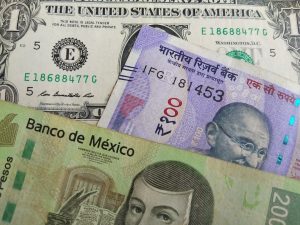Forex com dolls, also known as forex composites, are virtual currency pairs that represent a basket of currencies instead of a single currency like traditional currency pairs. They are designed to track the performance of a group of currencies against a base currency, typically the US dollar.
The concept of forex composites was introduced by Forex.com, a leading online forex broker. The company offers a range of forex composites that are based on different currency groups, such as the G10, emerging markets, or commodity currencies.
Forex composites are created by calculating the weighted average of the exchange rates of the currencies in the basket. The weights are determined based on the importance of each currency in the basket. For example, the US dollar has a higher weight in the G10 composite than the Norwegian krone because it is a more widely traded currency.
Forex composites offer several advantages over traditional currency pairs. Firstly, they provide a more diversified exposure to currency markets. Instead of focusing on a single currency pair, traders can invest in a basket of currencies to spread their risk and potentially increase their returns.
Secondly, forex composites can be used as a benchmark for currency portfolio performance. For example, a currency fund manager can use the G10 composite as a benchmark to measure their fund’s performance against a basket of major currencies.
Thirdly, forex composites can be used for hedging purposes. For example, a company that operates in multiple countries can use a forex composite that tracks the currencies of those countries to hedge against currency risk.
There are several types of forex composites available, each with its own characteristics and risks. Here are some examples:
G10 composite: This composite tracks the performance of the currencies of the ten largest developed economies in the world. The G10 includes the US dollar, euro, Japanese yen, British pound, Swiss franc, Canadian dollar, Australian dollar, New Zealand dollar, Swedish krona, and Norwegian krone.
Emerging markets composite: This composite tracks the performance of the currencies of emerging market economies such as Brazil, China, India, Russia, and South Africa. This composite is more volatile than the G10 composite due to the higher risk associated with emerging market currencies.
Commodity currencies composite: This composite tracks the performance of the currencies of countries that are major exporters of commodities such as oil, gold, or copper. This composite includes currencies such as the Canadian dollar, Australian dollar, and Norwegian krone.
While forex composites offer several advantages, they also come with some risks. Firstly, forex composites are not as widely traded as traditional currency pairs, which can lead to lower liquidity and wider bid-ask spreads.
Secondly, forex composites can be affected by global macroeconomic events that impact multiple currencies at once. For example, a global recession could cause the G10 composite to drop significantly as investors flock to safe-haven currencies such as the US dollar and Japanese yen.
Thirdly, forex composites can be influenced by the performance of individual currencies in the basket. For example, if the Canadian dollar experiences a sharp decline, it could drag down the performance of the commodity currencies composite.
In conclusion, forex composites are a useful tool for traders and investors who want to gain exposure to a basket of currencies instead of a single currency. They offer diversification, benchmarking, and hedging benefits, but also come with some risks. As with any investment, it is important to do your research and understand the risks before investing in forex composites.





